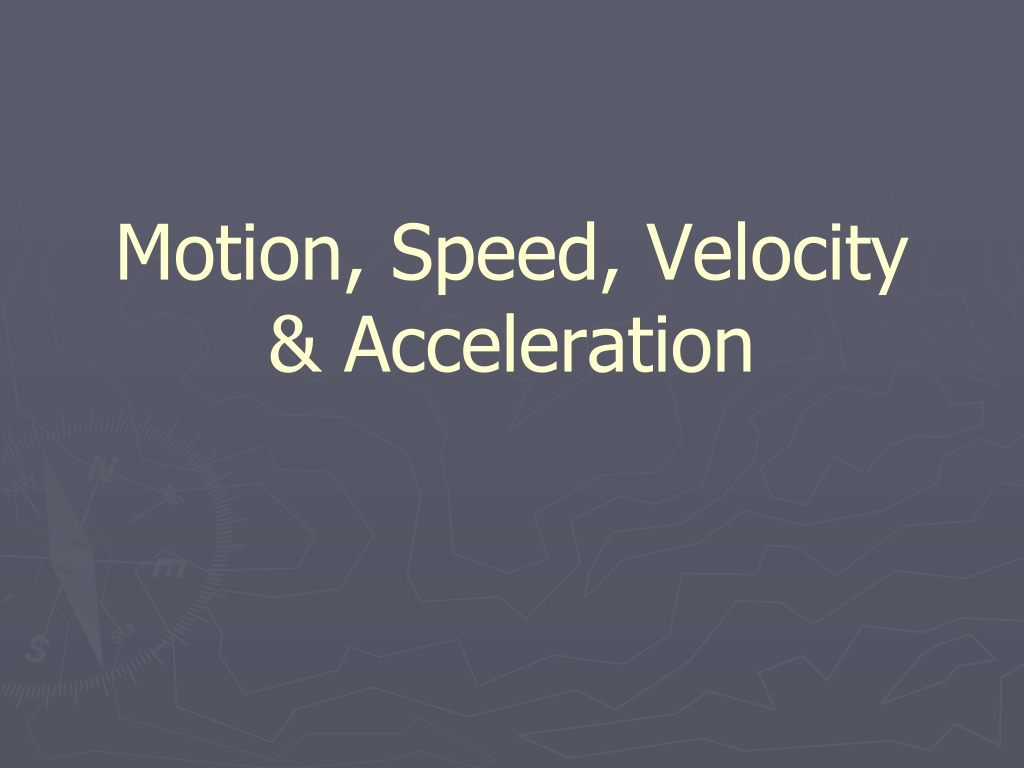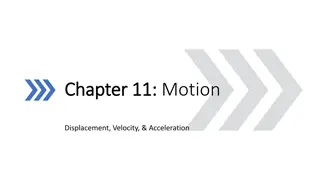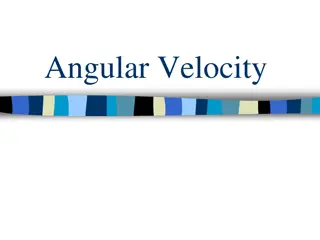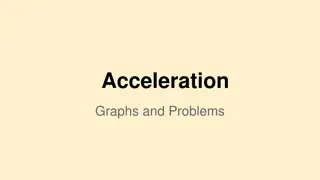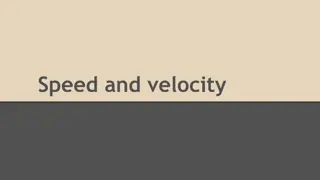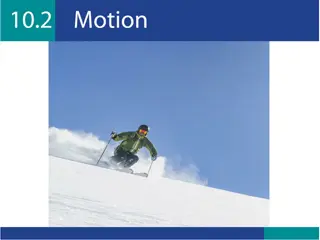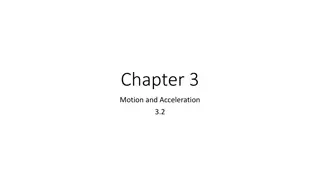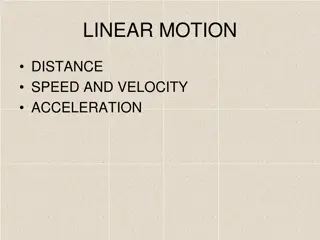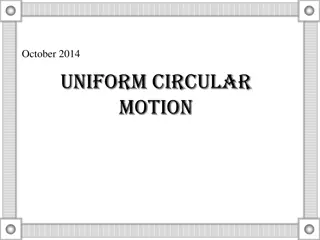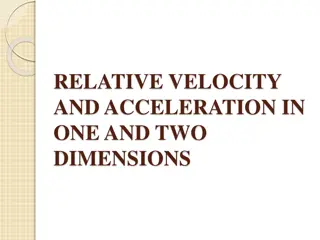Understanding Motion: Speed, Velocity, and Acceleration
Motion is the change in position of an object relative to a reference point. Speed is the distance traveled divided by the time interval, while velocity includes direction. Acceleration refers to the rate of change of velocity. Different concepts and scenarios related to motion, speed, velocity, and acceleration are explained with illustrative examples in this educational content.
Download Presentation

Please find below an Image/Link to download the presentation.
The content on the website is provided AS IS for your information and personal use only. It may not be sold, licensed, or shared on other websites without obtaining consent from the author. Download presentation by click this link. If you encounter any issues during the download, it is possible that the publisher has removed the file from their server.
E N D
Presentation Transcript
Motion, Speed, Velocity & Acceleration
Motion Motion an object s change in position relative to a reference point
Reference Point The Earth s surface is used as a common reference point A moving object can be used as a reference point as well
Speed Speed is the distance traveled divided by the time interval during which the motion occurred Normally, objects do not travel at a constant speed Average Speed = total distance total time
Which Distance? Farmer Jones drives 6 miles down a straight road. She turns around and drives 4 miles back. What was her average speed for this trip if it took 1 hour?
Your answer to this problem depends on your interpretation of "distance traveled". You could say: The total distance traveled by Farmer Jones is 10 miles. Therefore her average speed is 10 mi/hr. The net distance traveled by Farmer Jones is 2 miles. Therefore, her average speed is 2 mi/hr. There are good reasons to use either interpretation - it's mostly a matter of preference. We will interpret "distance traveled" to be net distance (also called displacement). Farmer Jones' average speed was 2 mi/hr.
Velocity Velocity is the speed of an object in a particular direction Imagine two birds leave the same tree at the same time. The both fly at 10km/hr for 5 minutes. Why don t they end up at the same place?
Velocity Velocity appears to be very similar to speed, however, when describing the velocity of an object you need to provide a magnitude and a direction Magnitude the speed of the object Direction the direction the object is moving
Velocity Ex) A school bus has a velocity of 35miles/hr heading west
Resultant Velocity An object can have a resultant velocity if it is experiencing more than one motion. For example if a person walks down the center of a bus while it is in motion there are two velocities occurring. 1. The movement of the bus 2. The movement of the person inside the bus
Example + = 15 m/s 1 m/s 14 m/s
Example + = 15 m/s 1 m/s 16 m/s
Acceleration Acceleration is the rate at which velocity changes over time An object accelerates if its speed, direction, or both change Average acceleration = final velocity starting velocity time it takes to change velocity
Acceleration Example A car on the highway is traveling 55 mi/hr and it passes another car. In order to pass, the car has to accelerate to 65 mi/hr. The car reaches this velocity 40 seconds later. What is the average acceleration of the car?
Acceleration and Velocity As velocity increases, so does acceleration As velocity decreases, so does acceleration When direction changes, so does acceleration When there is a constant velocity, there is no acceleration
